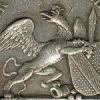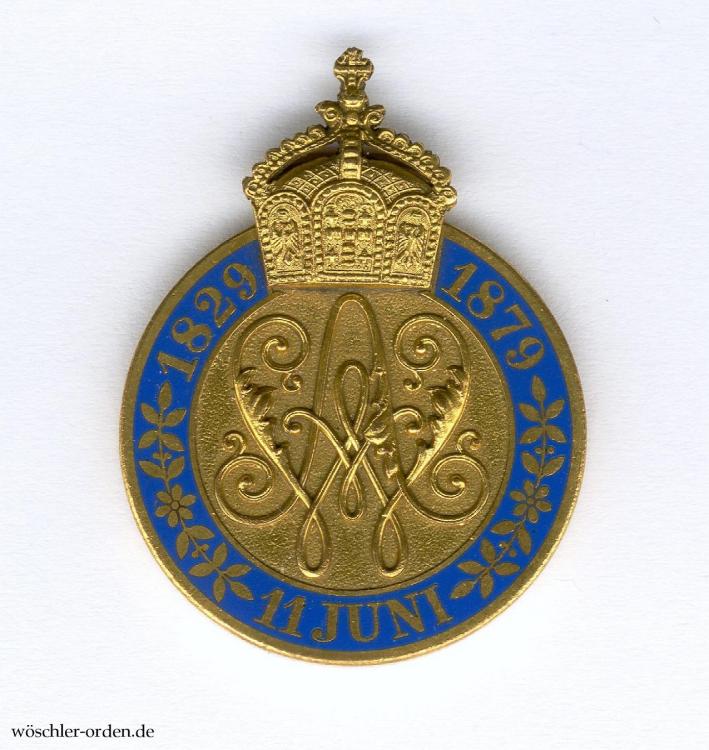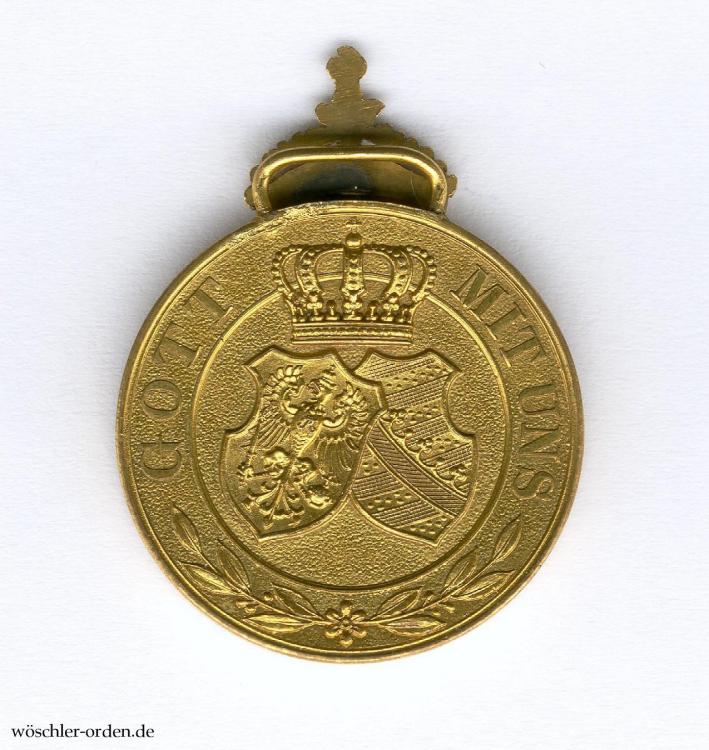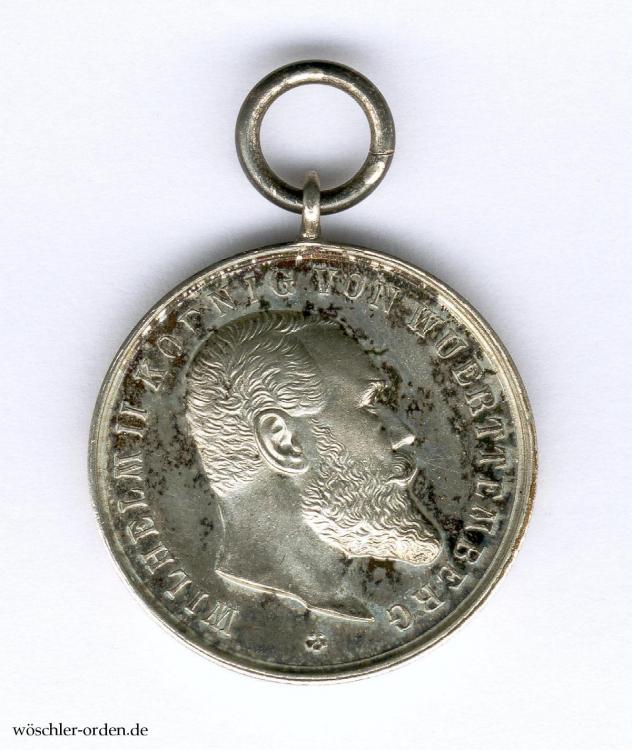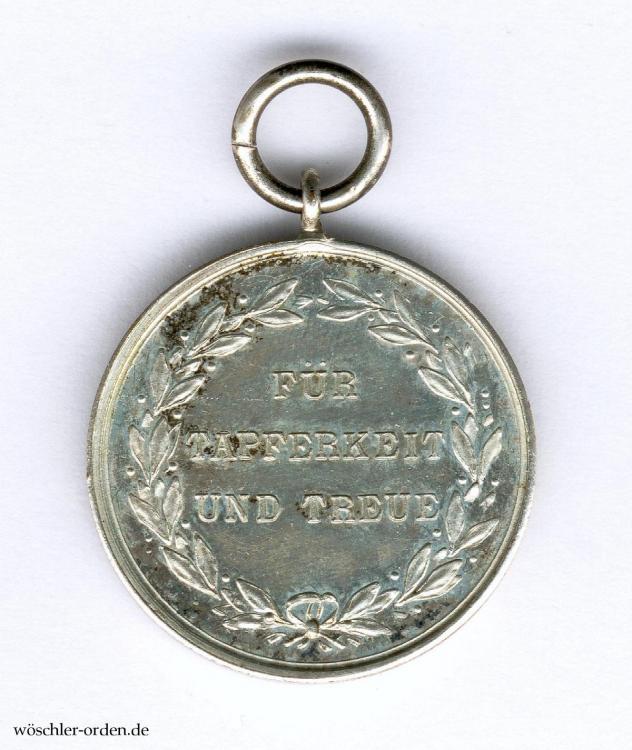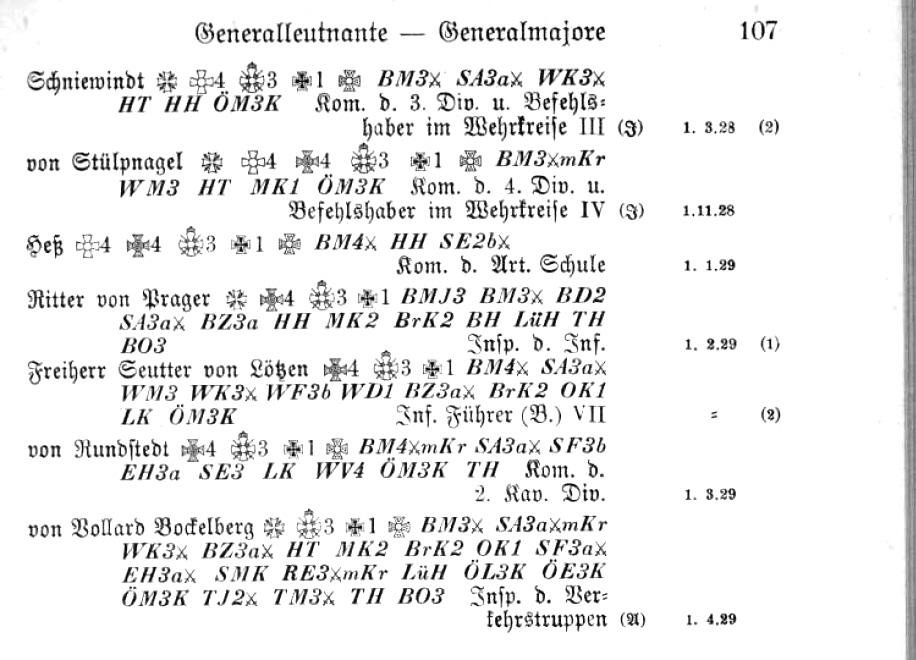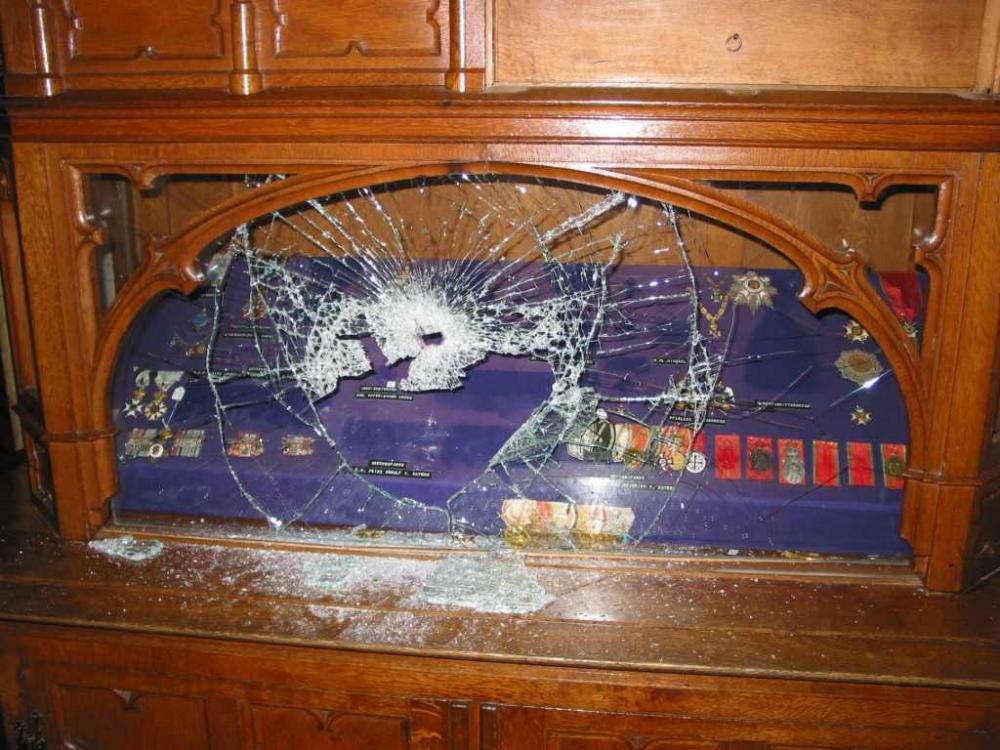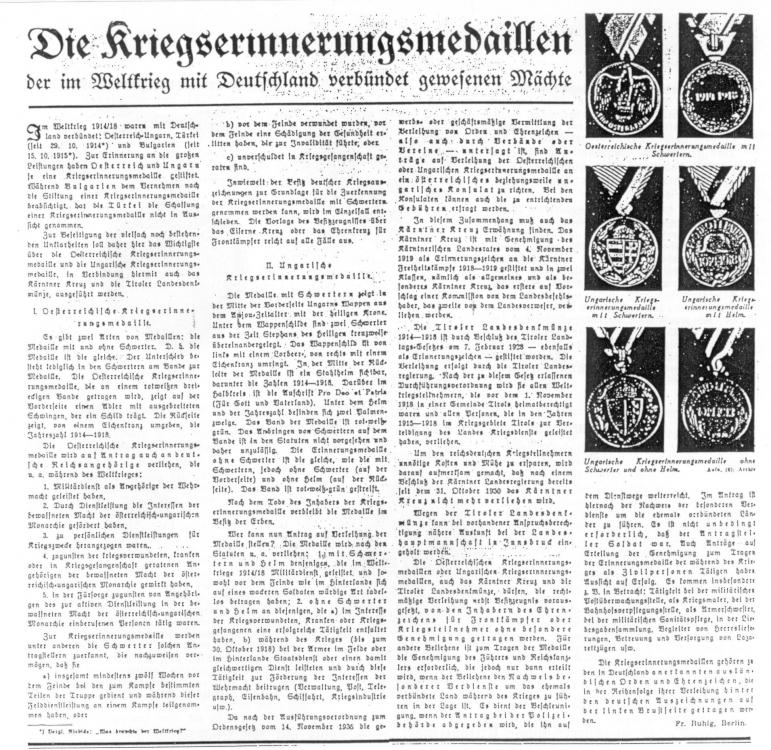-
Posts
3,086 -
Joined
-
Days Won
14
Content Type
Profiles
Forums
Blogs
Gallery
Events
Store
Everything posted by saschaw
-
As with literally almost every Grand Cross grade of the German states' orders, the "Grand Cross" consisted of a badge/cross to be worn on the sash, and a breast star. The star shown by Taz is an odd, privately made star with a fancy fantasy design. May have been a wearer's copy, or may have not been. The Steinam made breast star - picture from the OMSA site, I think? - is an official award type from late 19th century. Stuttgart auction house Eppli sold a marvelous Grand Cross ensemble, awarded in 1908 to Württemberg General der Infanterie z. D. Friedrich Wilhelm Ernst Julius Freiherr Pergler von Perglas (1827-1913), in their March 2017 auction. Check here for pictures and details of this incredible set.
-
The easy, oversimplified answer is: At an earlier stage of the war, there was simply no need for it. The Militär-Verdienstkreuz ("Goldenes" was never part of its official name!) was an award for EM and NCOs. They received EKs, and it did take quite a while until some NCOs held both classes of the EK and were fit for another, even higher bravery award. And that wasn't before 1916, 1917 and mainly 1918.
-
As pointed out by Pierce with the rank list entry, the Royal House Order of Hohenzollern is a knight's cross without swords, thus on the statutory ribbon. The Royal Crown order 3rd class has swords on ring, as Scheer held a 4th class with swords. The rank list shows the latter was later upgraded to a 2nd class with the star, both again with swords on ring. He would then drop the 3rd class with swords on ring, but not (never!) the 4th class with swords. Although not part of the medal bar, I want to address the rarest award he's wearing in this photograph: The officer's cross of the Bavarian MVO/MMO, first type without flames. Instituted in 1900 there were, according to the numbers published by Bernd Döbel on German SDA forum in 2014, only 103 officer's crosses awarded until 1905, when they were re-designed. Plus, a total of 72 of those was returned, after their recipients were promoted to higher classes or died. One of the rarest Bavarian decorations - well, besides the same cross with swords: five awarded, of which two were returned!
-
No, for the empty ribbon that resembles the Russian St. George Order. My bet as well! The Inhaber-Jubiläums-Medaille was given in 1908 to foreign military personnel of the eleven units whose honourary regimental chief the Austrian Emperor was. It came in bronze for NCOs, in silver for officers and in gold for general ranks... the latter as Prinz Leopold would wear it. Here is a good, old thread on the medal... By the way, I cannot see an Ottoman (small) Liyakat medal, but rather two (big) Imtiyaz medals. But it's all too crowded to recognize properly. For details as well as great pictures of literally all the Ottoman orders and medals, check Künker's 299th auction. They had an overwhelming amount of Ottoman awards offered.
-
An exact opposite piece to the star that has been shown here (by mistake) was offered on German ebay last week: A 1st class badge of the Prussian Royal Crown Order with the enamel ribbon of the Red Eagle Order. Being one of the numerous modern fakes from the 1970s or 1980s in my eyes, it remained unsold. Others apparently felt the same about it...
-
I'm a bit late here, but as you all spoke of a "3rd class" of the Hohenzollern House Order... what Wilhelm II is wearing here, and by the way, for everything else, the precedence would be wrong, is a special "small cross for the princes of the house", and belongs to the Princely House Order of Hohenzollern, not to its Royal branch! Not only photos, but even one fine example for sale, if anyone might be interested to obtain the Royals only type of this generally rare medal:
-
The theft took place at Schloß Hohenschwangau (near Schloß Neuschwanstein), but, as can be seen in the picture, this medal bar was still there after to theft, which means it was not stolen. Many other pieces were stolen, however, but I think all or at least most of them, luckily, found their way back to the museum.
-
Here's one of mine, from silvered bronze or brass and without Schwenzer's signature. As has been pointed out, those were private purchase wearer's copies medals. All awarded ones, somewhat more than two-hundred-thousand by the way, did not only come with the signature, but also in real silver: starting with 993/000 fine, later, due to shortage, successively reduced to 800/000, 500/000 and even 250/000 "silver". For this and even more detailed numbers and information see also Ulrich Klein's and Albert Raff's Die Württembergischen Medaillen von 1864–1933 (einschließlich der Orden und Ehrenzeichen), published Stuttgart 2010, pages 138 ff.
-
I agree with what was stated by the others, but would like to add: According to Bernd Döbel's award numbers of the Bavarian MVK which he published in early 2014 on German forum SDA, there were eight MVKs 1st class with the crown and swords awarded on this ribbon. Eight! Something to keep this in mind if we see them again and again and again...
-
Wow, thank you! We don't see GFM medal bars and groups every day. However, as Claudio's question for the classes hasn't been fully answered, not even by the picture of the actual group, here is v. Rundstedt's Reichswehr rank list entry from 1929, according to which his White Falcon was a pre-war knight's cross 2nd class:
-
The bar is very typical for a peace time German/Bavarian Royal... a lot of jubilee medals! To those already mentioned, I can add #4 is the German Südwestafrika-Denkmünze in Stahl, #5 is the Prussian Medaille zur Erinnerung an des Hochseligen Kaisers und Königs Wilhelm I., des Großen, Majestät, the so called "1897 Centenary Medal", and #6 is the Austrian-Hungarian Jubiläumskreuz from 1908. I could only find a really, really bad (and sad!) picture of this medal bar in a damaged vitrine after the 2005 theft in Schloß Hohenschwangau...
-
Good question! No, that is something I cannot find on the mentioned page. It may well be he did it like Roth, but I tend to assume he counted from actual lists. I don't have Roth on Saxony. Are his numbers close to those I quoted? PS: Thanks Daniel! Compared to more than 20,000 Bavarian MVOs 4th class, the Albrecht numbers seemed a bit low to me as well...
-
I think it is important to point out Vernon's Collector Guide is wrong if they claim this medal was "awarded in both gold and silver". It had one grad only, GOLD, and did never come in silver. The eleven mentioned pieces by spolei were silver gilt, and they were never awarded, but officially struck replacement medals for the wearers that had previously received medals in gold. Just to have this accurate here, if books aren't.
-
Now that's a lovely bar, ATIK. Thanks for sharing it with us! The combination hints to an officer in Füsilier-Regiment „Fürst Karl Anton von Hohenzollern“ (Hohenzollernsches) Nr. 40, whose honorary chief the Prince of Hohenzollern was. Despite being a non-Baden unit, it was part of the XIV. Armee-Korps and located in Rastatt, a Baden city. While the combination (and both Hohenzollern awards, on their own) are scarce, I'm sure there was a handful Leutnants and Oberleutnants with exactly this combination of awards.
-
According to late Gert Oswald's Sachsen Spezialkatalog, Band I. Orden und Ehrenzeichen des Königreiches Sachsen (p. 142), published by Frank Bartel in 2011, there was a total of 7894 knight's crosses 2nd class with swords awarded, the biggest part, 7104 to Saxons, the other 790 to "foreigners" (non-Saxons). This includes the colonial awards, but those were very few. So literally almost all of those were given in the "Great War". Oswald also gives award numbers for crosses without swords: 4062 to Saxons, 1509 to foreigners. I do not know if these numbers are complete, but his whole work seems very accurate in general.
-
All I know: many! Currently some collector friends are researching Godet's full range, but their work is still in progress and I do not have access to it. Anyway, there should be something published in near future. From craftsmanship and general look, I would assume this might well pre-date 1918. It is definitely not for a Prussian order. But, as they made awards for many different states and houses, it's not easy, if possible at all, to nail this down to a certain award. I think it's even possible (rather: likely) they used same generic boxes for different states, each with a fitting interior.
-
As could I. The gartered St. George star of King George V of Hanover was possibly one of, if not the best German decoration that was for sale in the past years. It was at Hermann Historica, Munich, offered in their 74th auction, May 2017, with a starting price of 40,000 Euro - and remained unsold. It the was re-listed in their following 75th auction, November 2017, at 25,000.- Euro. After a bidder fight, it went for 36,000.- Euro plus fees - almost what had been asked previously. And probably not too much, for those who can afford it. I couldn't. Thanks for the additional pictures of these Royal treasures! I especially love the half-sized ones... so damn cute! However, one picture was added by mistake: The Red Eagle Order 1st class star. This doesn't have a Garter, but the ribbon of the Prussian Royal Crown Order, a feature in use only from 1860s to 1880s to signify the wearer held both 1st classes of mentioned orders. Also, from the picture, it rather looks like one of Andreas Thies' offerings, none from the Royal Collection. However, those are almost as rare to find as gartered stars!
-
Now that was much earlier than I expected, but Künker's catalog went online right yesterday! Check this out: https://www.kuenker.de/de/auktionen/kataloge/326-329
-
That's what I have been told; it comes with lots of other pieces, besides other awards also including dinnerware with their coat of arms. The catalog, which will contain all those details we just don't have yet, should be available in maybe two weeks. PS: Might this thread be moved to the EK section, as it clearly is on EKs?


